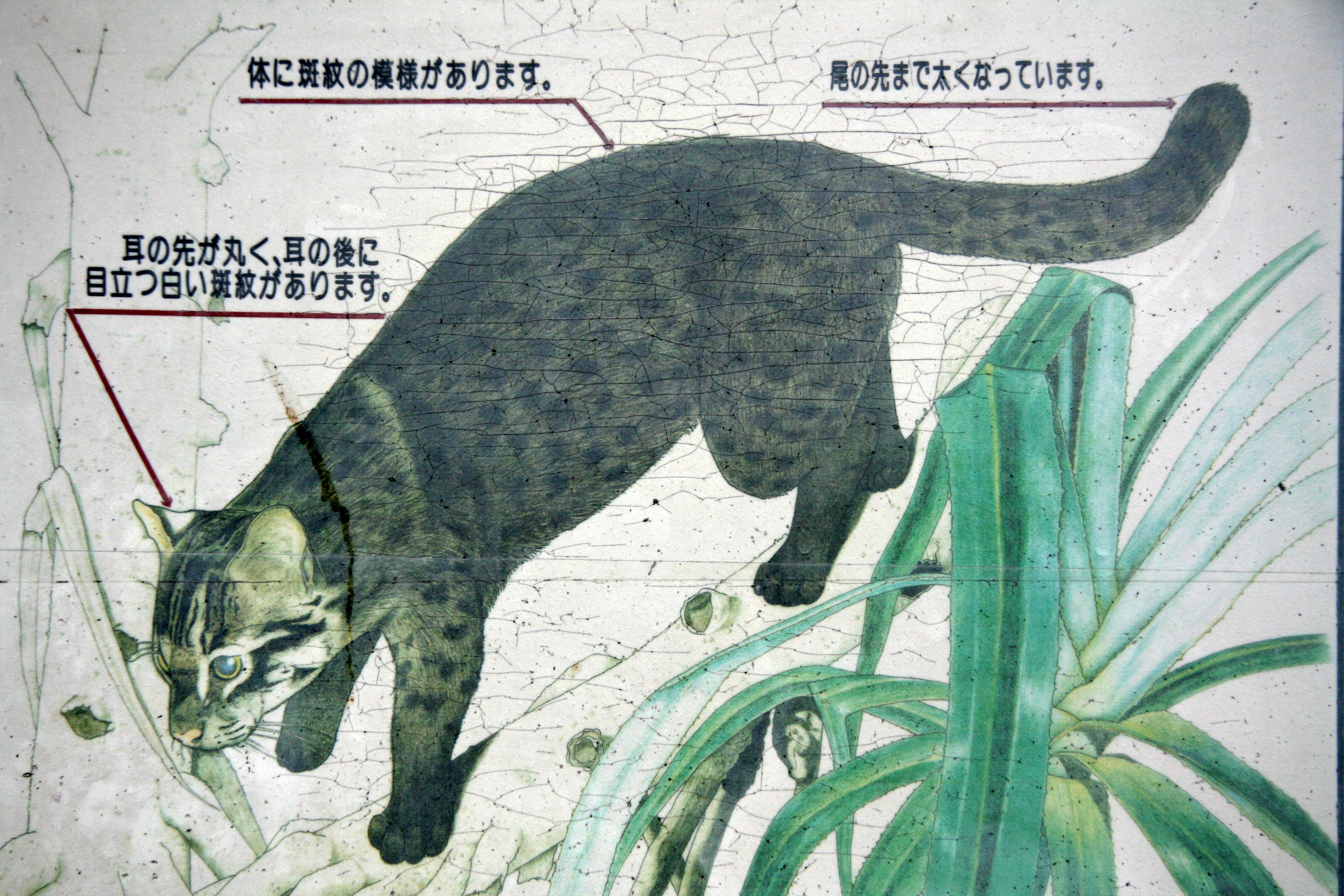
Since big cats get the lion’s share of fame worldwide, you may have never heard of the Iriomote cat, also known as the Iriomote–yamaneko. The size of a large house cat, this cryptic and resourceful wild feline exists only on a tiny Japanese island and numbers a mere 100 or so individuals.
Whether or not the Iriomote cat is a distinct species has long been debated. According to genetic analysis, it is most likely a subspecies of Leopard cat (Prionailurus bengalensis) whose ancestors arrived on the island of Iriomote about 200,000 years ago. Since then, the small brown wildcat has done a formidable job adapting to an unusual ecological niche as the island’s sole carnivore. Its survival depends on its being an unfussy eater, partaking of everything from frogs to fruit bats. It is similarly easygoing when it comes to habitat, inhabiting mountains and lowlands alike and even swimming in rivers.
While the Iriomote cat’s population has never exceeded more than a few hundred individuals, its persistence is now threatened by growing human influence. Over 2000 people make Iriomote their home and tourism and agriculture are expanding. Development has squeezed the cat into smaller habitats while road widening and increased traffic have made auto collisions the yamaneko’s number one threat.
People may be the problem, but fortunately for the critically endangered cat, they are also part of the solution. Governments, scientists and NGOs are all stepping up to ensure the subspecies has a future. The animal is protected by law due its status as a Special Natural Monument and National Endangered Species in Japan and occurs on the country’s national Red List. A National Park, which has recently been expanded to cover all of Iriomote, safeguards its habitat. Hunting the cat is forbidden and poaching has not been a serious problem.
Some conservation projects, including one to control the island’s feral cat population, have been very successful. Previously feral cats competed with their wild cousin and had the dangerous potential to transmit diseases such as feline immunodeficiency virus. The feral population has been dramatically reduced by a programme that traps and finds homes for the cats through a shelter system. A Wildlife Conservation Centre also opened in 1995 to rehabilitate injured wildcats.

The most significant hazard to the Iriomote Cat remains cars. ‘Traffic collisions [have] increased,’ laments Masako Izawa, a biologist who has been studying the cat for over 30 years. ‘So far the maximum number of accidents per year was six in 2013. But six car accidents have already occurred this year. One of [the victims] was a pregnant female and had two kittens in her.’
Many initiatives to curb collisions such as road signs, rumble strips and underpasses allowing cats to cross the road safely have already been implemented, but more action is clearly needed to keep pace with the increasing volume and speed of cars on the road.
Japan’s Environment Ministry recently announced plans to provide financial support to zoos and other facilities implementing captive breeding programs for endangered species. However there are no current plans to start such a programme for the Iriomote cat. According to Izawa, ‘the conservation of the wild population is far more important than captive breeding.’
[geoip-content not_country=”CA”] Want to watch documentaries on Japan? Chernobyl Fukushima: Living with the Legacy is now streaming on the Love Nature app. Subscribe today for your 30-day-free trial. [/geoip-content]
